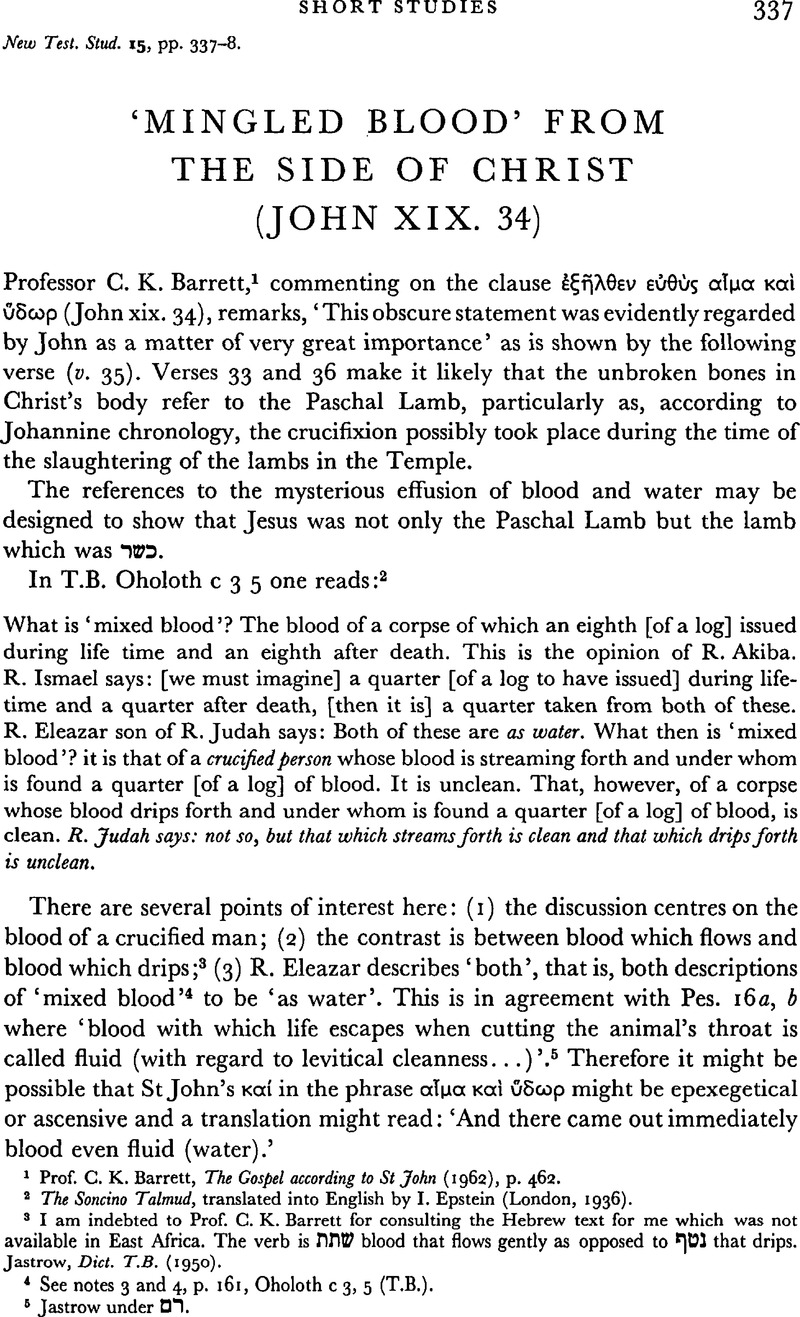Article contents
‘Mingled Blood’ From the Side of Christ (John xix. 34)
Published online by Cambridge University Press: 05 February 2009
Abstract

- Type
- Short Studies
- Information
- Copyright
- Copyright © Cambridge University Press 1969
References
page 337 note 1 ProfBarrett, C. K., The Gospel according to St John (1962), p. 462.Google Scholar
page 337 note 2 The Soncino Talmud, translated into English by Epstein, I. (London, 1936).Google Scholar
page 337 note 3 I am indebted to Prof. C. K. Barrett for consulting the Hebrew text for me which was not available in East Africa. The verb is ℸℸω blood that flows gently as opposed to ℸℶ that drips. Jastrow, , Dict. T.B. (1950).Google Scholar
page 337 note 4 See notes 3 and 4, p. 161, Oholoth c 3,5 (T.B.).
page 337 note 5 Jastrow under ℶℸ.
page 338 note 1 Moulton, and Geden, , Concordance to N.T. (1957).Google Scholar
page 338 note 2 Danby, , Mishnah (London, 1933).Google Scholar
page 338 note 3 One wonders whether 'mingled blood' was partly so called because of the percentage of plasma remaining in it.
page 338 note 4 Barrett, op. cit. p. 460.
page 338 note 5 I cannot correlate this interpretation to any other references to water and blood in the Johannine corpus, I John v. 6 (twice), v. 8. I should observe, however, that these texts refer to water first and then to blood and also that the peculiar combination in I John v. 7, 8 of a masculine participle followed by the masculine ol τρεζ agreeing with three neuter nouns makes it difficult to interpret the text in any other way but as a personification or allegory. It would seem that John xix. 34 is entirely independent of I John v. 7, 8.
- 3
- Cited by


